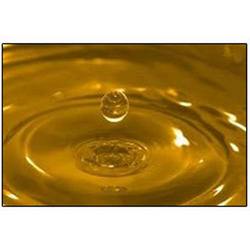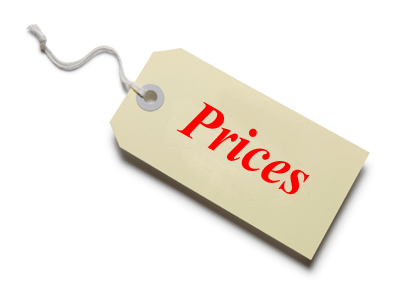
The price of petrol in India is at a four-year high. The price of diesel is at an all time. And from the looks of it, petrol/diesel prices are unlikely to go down any time soon.
Narendra Modi took over as the prime minister of India in May 2014. The average price of the Indian basket of crude oil during the course of the month was $106.85 per barrel. Petrol was sold at Rs 80 per litre in Mumbai and Rs 71.41 per litre in Delhi. Diesel was being sold at Rs 65.21 per litre and Rs 56.71 per litre respectively, in the two cities.
Cut to March 2018. The average price of the Indian basket of crude oil is much lower at $63.80 per barrel. Petrol, as on April 3, 2018, is being sold at Rs 81.84 per litre in Mumbai and Rs 73.99 per litre in Delhi. Diesel is being sold at Rs 69.06 per litre and Rs 64.86 per litre, respectively, in the two cities.
The average price of crude oil in March 2018 was 40.3% lower than it was in May 2014. But the price of petrol and diesel, which are products made out of oil, is higher now than it was in May 2014.
What explains this? One reason lies in the fact that the rupee has depreciated against the dollar. One dollar was worth around Rs 58-59 in May 2014. In March 2018, it is worth Rs 64-65.
This basically means that Indian importers of oil have to pay more in terms of rupees for the dollars that they need, to buy oil. Hence, to that extent petrol and diesel will be costlier. But this still does not explain.
At Rs 59 to a dollar, one barrel of the Indian basket of crude oil would have cost around Rs 6,304 in May 2014. At Rs 65 to a dollar, one barrel of oil would have cost around Rs 4,147 per barrel in March 2018. Even after adjusting for the depreciation of the rupee against the dollar, oil was around 34.2% cheaper in March 2018 in comparison to May 2014.
So, what explains the fact that petrol and diesel are now costlier than they were when Modi first came to power?
The retail price of petrol and diesel, constitutes taxes collected by the central government, the respective state government where they are being sold, as well as the dealer commission.
Let’s consider the situation in Delhi in May 2014. The retail selling price of one litre of petrol as mentioned above was Rs 71.41 per litre. The price before dealer commission and taxes was Rs 47.12. This meant that Rs 24.29 per litre was collected as dealer commission and taxes. Of this, Rs 2 made for the dealer commission. Rs 10.39 was the tax collected by the central government. Rs 11.9 was the tax collected by the state government. The dealer commission and taxes constituted 34% of the retail selling price of petrol.
Now let’s cut to March 2018. The retail selling price of petrol as on March 19, 2018, in Delhi, was Rs 72.19 per litre (this is the latest data available). The price before dealer commission and taxes worked out to Rs 33.78 per litre. This basically means that Rs 38.41 per litre was collected as dealer commission and taxes. Of this Rs 3.58 was the dealer commission. Rs 19.48 was the tax collected by the central government and Rs 15.35 was the tax collected by the state government. The dealer commission and taxes constituted for around 53% of the retail selling price of petrol.
Basically, between May 2014 and now, the dealer commission and taxes in total have gone up by 58.1% (in Delhi). A similar dynamic has played out in other parts of the country as well. The same logic holds for diesel as well. In fact, dealer commission and taxes made up for 21.5% of the diesel price in Delhi, in May 2014. As on March 19, 2018, it made up for 43.2% of the retail selling price.
What has happened here? The central government and the state government, since 2014, have captured a bulk of the fall in the price of oil, by increasing taxes on petrol and diesel. While the average price of the Indian basket of crude oil was $106.85 per barrel in May 2014, it had fallen to as low as $28.08 per barrel in January 2016. A commiserate fall in petrol and diesel prices did not happen.
One of the major policy decisions of the Modi government when it first came to power was to increase the excise duty on petrol and diesel. Along similar lines, the state governments also quietly raised taxes on petrol and diesel.
In an ideal world, when the consumer did not receive the full benefit of falling oil prices, he should at least be protected a little from high prices of petrol and diesel. But that is unlikely to happen, given that the central government is not making as much money through the Goods and Services Tax (GST), as it expected to.
How is the GST linked to this?
For 2018-2019, the government expects to collect Rs 6,03,900 crore as central GST. This amounts to Rs 50,325 crore per month, on an average. In the month of March 2018, when the collections for February 2018 were made, the central GST collected amounted to Rs 27,085 crore (Rs 14,945 crore was collected as central GST + Rs 12,140 crore was the central government’s share in the integrated GST). This is way lower than what the government has projected in the annual budget.
Unless, central GST numbers improve, the total revenue collected by the government will be under pressure in 2018-2019.
In this scenario, when the government is already under pressure on the revenue front, it is highly unlikely to decrease taxes on petrol and diesel, and help the end consumer. If it does so, there will other costs that will have to be paid for, right from a rising fiscal deficit to a higher interest rate.
As far as the international price of oil is concerned, there are way too many factors influencing it at any point of time, to make a reasonable prediction about it. Having said that, one factor that needs to be kept in mind is the up-coming initial public offering (IPO) of Saudi Aramco, the biggest oil company in the world.
The IPO is being billed as the biggest IPO in the world and is likely to unveiled by the end of June 2018, newsreports suggests.
In this scenario, it is highly unlikely that Saudi Arabia will allow the price of oil to fall from these levels, until the IPO is pushed through. The Indian basket of crude oil has seen a largely upward trend since June 2017.
Long story short, Indians need to be prepared for a period of high petrol and diesel prices.
The column originally appeared in the Quint on April 3, 2018.


